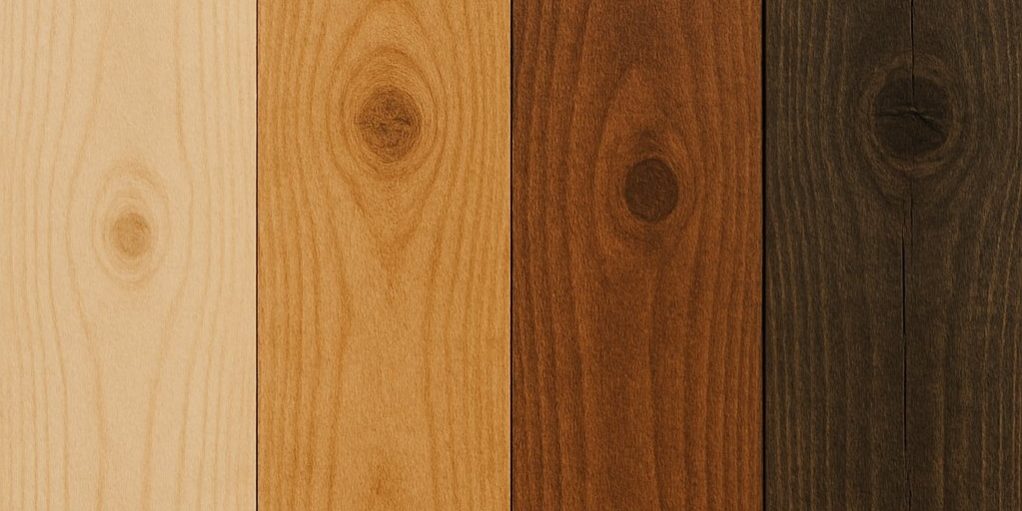The Color Evolution of Wood: A Captivating Journey from Freshness to Maturity
At Creatimber Global Sdn Bhd, we understand that wood is one of nature’s most beautiful and versatile resources. As wood ages, it undergoes a fascinating transformation, particularly in terms of its color. From the moment wood is harvested to when it is crafted into a finished product, its color changes in response to various environmental factors and the passage of time. These shifts not only enhance the aesthetic value of wood but also give us deeper insight into the uniqueness of each piece. Whether you are a craftsman, a designer, or a wood enthusiast, exploring these natural color changes allows for a richer appreciation of this magnificent material.
1. The Initial Color of Freshly Cut Wood
When wood is freshly cut from the tree, it boasts a natural, vibrant color that reflects the specific tree species it came from. For example, beech wood may present a pale yellow or creamy hue, oak can range from light yellow to brown, and mahogany is known for its rich red tone. These colors are influenced by the wood’s natural resins, tannins, and other organic compounds.
Immediately after being cut, wood tends to have a moist and lively appearance due to the high levels of resin and water content. At this stage, its color is at its purest form — fresh, bright, and unaltered. This gives the wood a natural, eye-catching look, which can make it especially appealing for a range of woodworking projects.
2. Oxidation and Aging: The Gradual Transformation
As wood ages, a process known as oxidation occurs, and its color naturally changes. When exposed to oxygen in the air, the wood begins to darken. This is commonly observed in woods like beech and oak, which may start out lighter but gradually take on a deeper yellow or brown hue.
The aging process doesn’t just affect the wood’s color but also its texture. Over time, the wood’s surface becomes smoother and more refined, which adds to its visual depth and character. These subtle transformations contribute to a piece’s uniqueness, making it stand out as a product of both nature and time.
3. The Impact of Sunlight: UV Rays and Their Role in Color Changes
Sunlight, particularly ultraviolet (UV) rays, plays a significant role in altering the color of wood. Prolonged exposure to sunlight causes natural components in the wood, such as tannins and lignin, to break down. This results in a gradual change in the wood’s color, often making it darker or giving it a yellowish tint.
For example, woods like beech and pine can acquire a golden or deep brown hue when exposed to the sun for extended periods. On the other hand, darker woods such as mahogany and walnut may become even more saturated, enhancing their rich tones as they age. This natural process gives wood a layered, complex appearance that deepens its beauty.
4. The Influence of Climate: How Environmental Factors Shape Wood’s Color
The climate and environment where the wood is harvested also play an essential role in its color development. Factors like humidity, temperature, and soil composition influence how the wood will evolve over time. For example, wood from a humid climate, such as red oak, tends to have a darker color, while wood from a drier region, like white oak, usually remains lighter.
Moreover, the geographical origin of the wood can further impact its color. Tropical woods like rosewood may take on deep reds or purples, while wood from cooler climates typically maintains lighter hues. The environment in which the tree grows directly affects the wood’s appearance, contributing to a diversity of color variations across different species.
5. Surface Treatments: Enhancing and Altering Wood’s Color
In addition to natural color changes, woodworkers often apply various surface treatments to enhance or alter the color of wood. Treatments like staining, varnishing, or using natural oils can transform the wood’s appearance and increase its durability.
For instance, applying a dark varnish can intensify the color of the wood, bringing out a deeper, more dramatic effect. On the other hand, natural oils preserve the wood’s inherent color, enhancing its softer, more organic look. These treatments not only improve the wood’s visual appeal but also protect it from the elements, ensuring the wood remains beautiful for years to come.
Conclusion: The Beauty of Wood’s Color Journey
At Creatimber Global Sdn Bhd, we believe that the changing colors of wood are what make it so unique and captivating. From its initial bright hue to the deeper, richer shades that develop over time, every piece of wood tells a story. Whether influenced by oxidation, sunlight, or the environment, these color changes bring out the beauty and complexity of this natural material.
For woodworkers and designers, understanding the evolving colors of wood adds another layer of creativity and appreciation to every project. The color journey of wood is not just a visual experience; it’s a celebration of nature’s artistry, a reflection of time’s passage, and an invitation to create beautiful, timeless pieces. At Creatimber Global, we are proud to supply premium wood sourced from Malaysia, offering a variety of rich and stunning wood types that undergo these captivating transformations, ready to be crafted into your next masterpiece.






